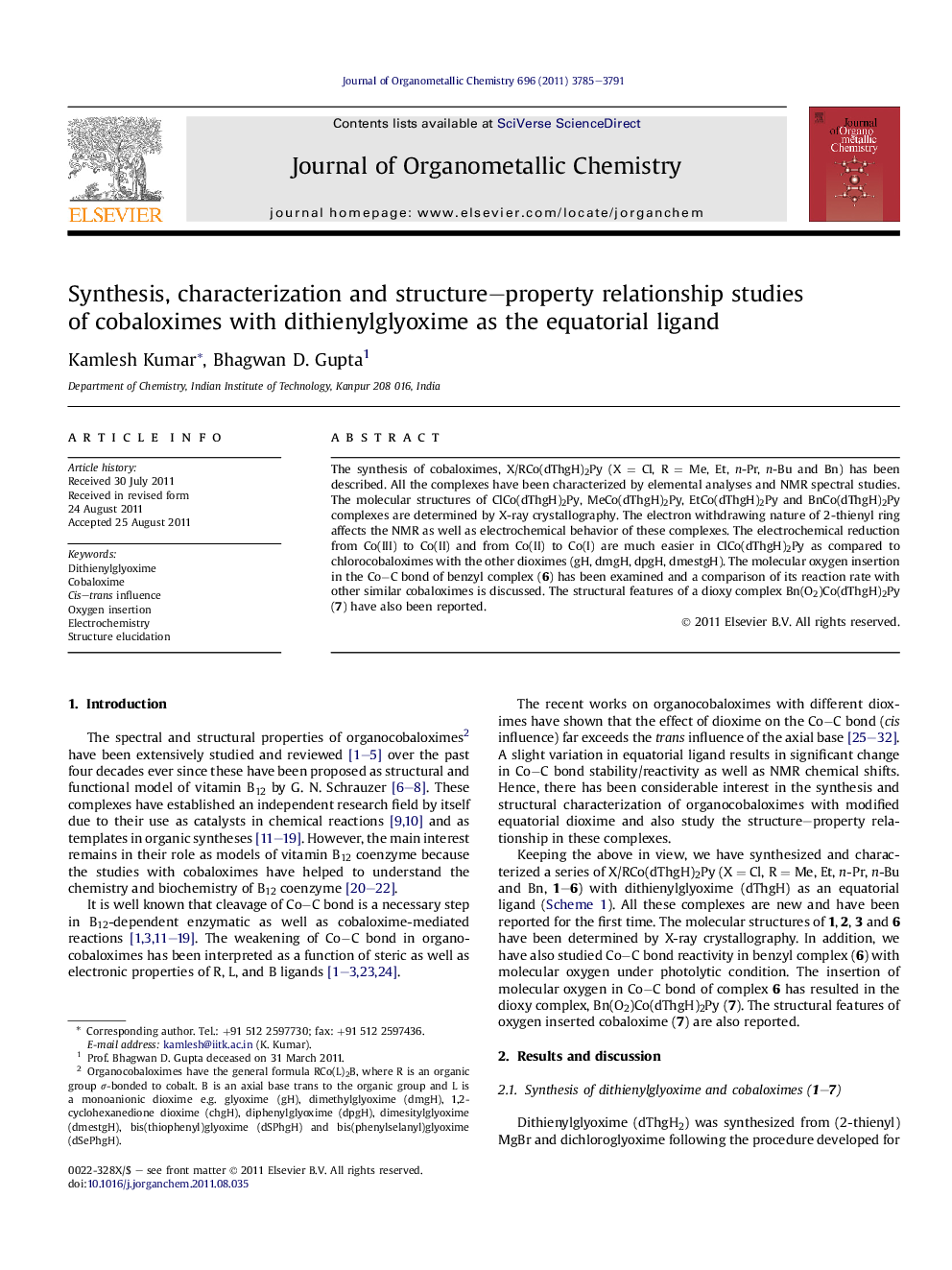| Article ID | Journal | Published Year | Pages | File Type |
|---|---|---|---|---|
| 1325120 | Journal of Organometallic Chemistry | 2011 | 7 Pages |
The synthesis of cobaloximes, X/RCo(dThgH)2Py (X = Cl, R = Me, Et, n-Pr, n-Bu and Bn) has been described. All the complexes have been characterized by elemental analyses and NMR spectral studies. The molecular structures of ClCo(dThgH)2Py, MeCo(dThgH)2Py, EtCo(dThgH)2Py and BnCo(dThgH)2Py complexes are determined by X-ray crystallography. The electron withdrawing nature of 2-thienyl ring affects the NMR as well as electrochemical behavior of these complexes. The electrochemical reduction from Co(III) to Co(II) and from Co(II) to Co(I) are much easier in ClCo(dThgH)2Py as compared to chlorocobaloximes with the other dioximes (gH, dmgH, dpgH, dmestgH). The molecular oxygen insertion in the Co−C bond of benzyl complex (6) has been examined and a comparison of its reaction rate with other similar cobaloximes is discussed. The structural features of a dioxy complex Bn(O2)Co(dThgH)2Py (7) have also been reported.
Graphical abstractThe synthesis and characterization of cobaloximes with dithienylglyoxime are described. The electron withdrawing nature of 2-thienyl ring affects the NMR and the electrochemical behavior of these complexes. The rate of molecular oxygen insertion in benzyl cobaloximes gives the order of dioximes, dmestgH > dThgH >>dpgH > dmgH. Figure optionsDownload full-size imageDownload as PowerPoint slideHighlights► Cobaloximes with dithienylglyoxime as the equatorial ligand. ► The 2-thienyl groups in equatorial dioxime affect the NMR, Co−C bond stability and redox behavior of cobaloximes. ► Oxygen insertion in the Co−C bond of benzyl cobaloxime with visible light. ► X-ray crystal structures of new cobaloximes.
